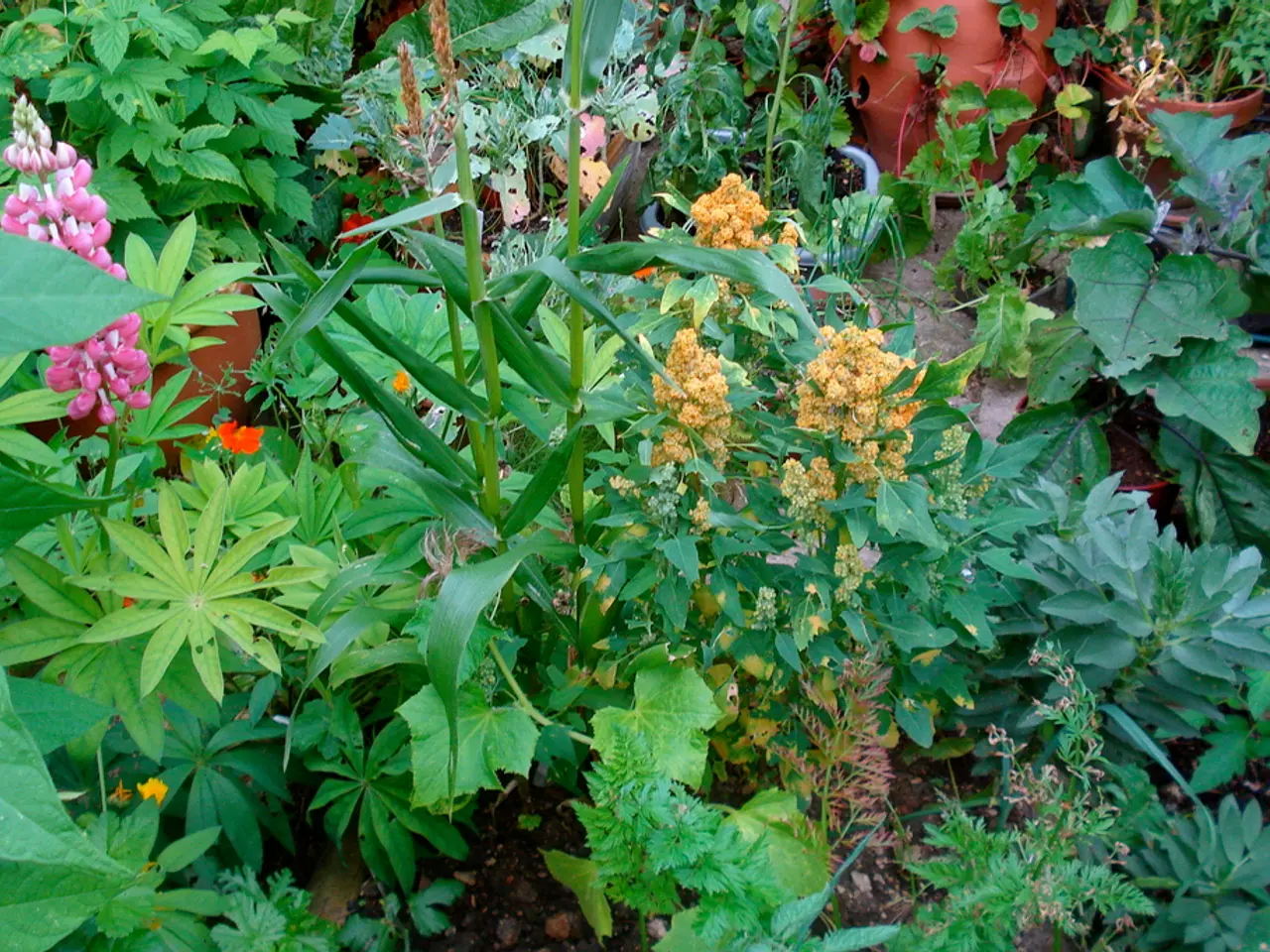Strategies for Naturally Increasing Yield in Your Vegetable Garden
Gardeners Embrace Sustainable Practices to Nurture London Plot
In a bustling corner of London, a dedicated gardener has transformed a modest plot into a thriving oasis, teeming with life and colour. The secret to this verdant haven lies in a carefully curated approach to gardening, one that prioritises sustainability, biodiversity, and a deep respect for nature.
To ensnare slugs and snails, the gardener employs an unconventional yet effective trap: beer. Placed strategically among the plants, the beer attracts these pesky creatures, who are then unable to escape, allowing the gardener to dispose of them without harm.
Avoiding splashes when watering is another crucial practice, as it helps prevent the spread of fungal spores. This simple act contributes to maintaining a healthy and vibrant garden ecosystem.
The gardener's composting efforts are nothing short of impressive. Four compost bays produce enough compost to cater to a quarter of the plot, a testament to the efficiency of their methods. The compost is made using annual weeds, green manure, and kitchen scraps, with no farm manure in sight. In winter, green manure crops like field beans, Italian rye grass, or phacelia are sown, providing nutrients for the soil come spring.
To control larger flying pests, especially pigeons, a hawk kite named Henry is enlisted. This natural predator helps maintain a balance in the garden's ecosystem, ensuring that no one species dominates.
When it comes to pest control, the gardener eschews off-the-shelf pesticides that can harm beneficial insects. Instead, they employ companion planting to attract natural predators and control pests. Calendula, for instance, repels aphids, while borage attracts bees. Mint and chives keep pests from attacking brassicas and carrots.
Good ventilation is key to disease prevention, according to the gardener's experience. Leaving space between plants encourages good air circulation, movement, and water evaporation, all of which help prevent diseases. In summer, the greenhouse floor is watered, and a bucket of water is left out to discourage spider mites.
The gardener also practices diversity in planting to attract predators for pests. Buckwheat, sown in summer to cover bare ground and suppress weeds, is just one example of this approach.
Composting at home is another integral part of the gardener's sustainable practices. A homemade compost bin can be built using a repurposed 55-gallon plastic barrel, a 3-bin wooden compost system, or a simple free-standing bin made from wood or wire mesh. The compost is made by layering green, nitrogen-rich materials with dry, carbon-rich materials, and maintaining the bin's moisture levels.
The gardener also makes their own organic feed, or 'tea', using nettle tops or comfrey leaves. Rainwater is collected via downpipes from both the shed and greenhouse roofs, further reducing the garden's environmental footprint.
This London gardener's dedication to sustainable practices serves as an inspiration for many. By embracing these methods, they have transformed a small plot into a thriving, biodiverse garden that is not only beautiful but also kind to the environment.
[1] Building a Compost Bin: A DIY Guide
[2] How to Make Compost at Home
[3] Multi-Bin Composting System Plans
[4] Composting 101: A Beginner's Guide
In the gardener's thriving London plot, companion planting is used to attract natural predators and control pests, such as planting calendula to repel aphids or mint to keep pests from attacking brassicas and carrots.
To further reduce the garden's environmental footprint, the gardener collects rainwater via downpipes from both the shed and greenhouse roofs.
Pest control is carried out sustainably in this home-and-garden by utilizing a multi-bin composting system to produce compost using annual weeds, green manure, and kitchen scraps, as well as enlisting a hawk kite named Henry to maintain a balance in the garden's ecosystem.





